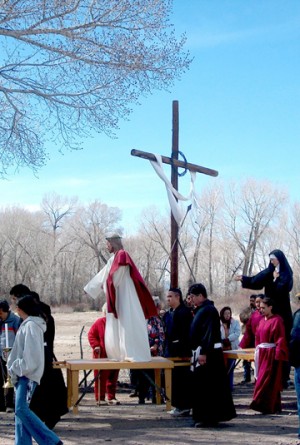by Aaron Mandelkorn
The solar electricity industry is currently embracing two distinctive approaches best described as centralized and distributed energy models. In recent years the shift from distributed, utility-owned solar electric systems to large private utility scale, and utility/ owner systems has become more prevalent. Each approach has its pros and cons and the truth is, we need renewable energy in any and every capacity we can get it. Education and understanding of renewable energy alternatives is necessary to make the best choices for our future energy needs.
Centralized solar refers to large-scale installations such as the 8-megawatt plant in Alamosa and the proposed Tessera solar facility in the San Luis Valley. These facilities serve as generation stations and help produce substantial amounts of electricity for the energy grid. Proposals for large-scale industrial facilities often lead to some objections, and solar farms are no exception. Here are some points to consider with proposed large-scale solar or wind installations.
First, utility-scale solar plants require large tracts of land and are commonly placed in rural agricultural areas. Their construction and presence can be invasive and long lasting. Excavation, trenching, and construction all have an impact whether constructing a coal fired power plant or a solar farm. With centralized solar farms, electrical sub-stations are required and transmission lines need to be run over long distances to get that clean power into the grid. Secondly, from a performance standpoint, we see the case of putting all eggs into one basket. On sunny days, these facilities are optimal, but extended cloud cover can limit overall solar gain. Finally, who ultimately benefits from these large facilities? When the output of these solar plants simply goes into the grid it does little to offset the electrical consumption of the city or town it is located. Those living nearby these facilities have all the burdens of the project while receiving little of the benefit.
The distributed energy model is the opposite. Distributive solar energy refers to smaller energy systems that produce energy on-site. The end user often owns the system and directly receives the economic benefits of the system. Small-scale distributive solar energy systems are not designed to supply the grid with energy but rather take care of the energy needs of the site, home or business it is powering. With the distributive approach there is also the added benefit of efficiency. Efficiency and voltage are lost when electricity has to travel long distances, and many feel the best use for solar power generation is on-site. A photovoltaic system on a consumer’s rooftop exists directly at the point of consumption and miles of transmission lines are not required to support its presence.
The major hurdle with on-site generation has always been the site itself. Is the site acceptable for generating power? Is there enough roof space? Enough unobstructed southern exposure? These are all considerations when installing a solar energy system on a home or business.
But change is on the horizon. A “solar gardens” bill being introduced by State Rep. Claire Levy, D-Boulder, has the potential to dramatically change the way we use solar energy by implementing off-site generation and virtual metering to the benefit of the end user. If the bill passes, someone who, for example, couldn’t put a solar array up on his or her property because of shade or space issues, could potentially own a solar array off-site. The power generated from that array could be sent to the grid and credited to the system owner’s home or business’ electric bill. Neighborhoods and communities could put up solar arrays, and the power generated could be distributed amongst all members. This would allow tremendous flexibility in the design and implementation of solar energy systems. Most importantly, this bill would allow those who otherwise could not, to take advantage of solar energy.
Any choice in solar energy alternatives requires educating ourselves on what exactly it takes to turn on that bedside table lamp. Solar electricity has the capacity for amazing improvement in our lives and provides us the ability to change our environment for the better.
Aaron Mandelkorn lives and works in Salida. He runs Renewable Energy Outfitters and specializes in remote power systems, with extensive knowledge in solar, wind and micro-hydro system technologies. He can be reached at reosolar@gmail.com

